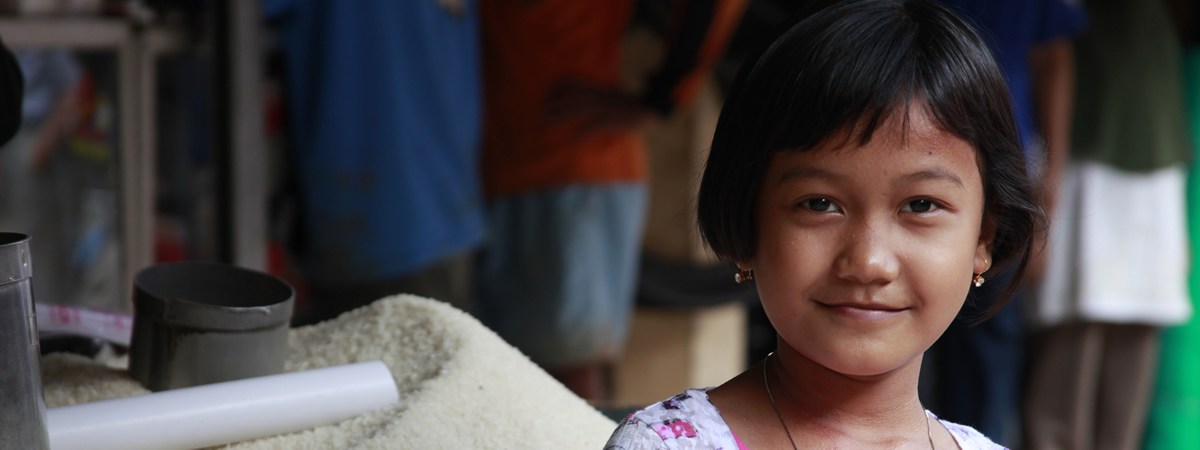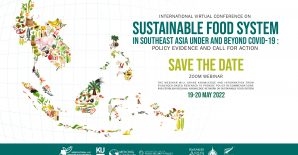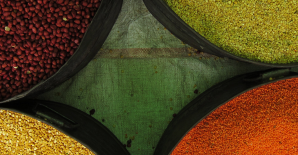News and Analysis
Agriculture & Food Systems, Climate Change and Nutrition in CIS Countries featuring the Global Nutrition Report 2015 Conference to be held on 11 Feb 2016 at the Eurasian Center Food Security (ECFS) in Moscow, Russia. The International Food Policy Research Institute (IFPRI), the Eurasian Center for Food Security (ECFS) and the World Bank are organizing a conference on the linkages between climate change, agriculture, food systems, social safety net and nutrition outcomes at the Lomonosov Moscow State University in Moscow, Russia. It will bring together various stakeholders from the research, government, and donor communities to exchange and review knowledge, ongoing research efforts, identify gaps for improvement and future research in the region. The objective of the event is to help raise awareness about the importance of nutrition and to make development in the region more nutrition sensitive.
Online Consultation on Network and Partnerships in the area of Food Security running 11 January to 31 January 2016. You are invited to join an e-consultation on Food Security Networks jointly launched by the Eurasian Center for Food Security (ECFS) and the World Bank. The objective of this online consultation is to bring together food policy experts and other stakeholders including representatives of Civil Society Organizations, NGOs, Farmers, Women and Youth associations from Eurasian region to identify Food Security and soil issues and facilitate discussions on how to tackle them, improving collaboration and cooperation in the Eurasian region. This discussion will serve as a preparatory stage for the upcoming International Conference on “Eurasian Food Security Network and Eurasian Soil Partnership” to be held in Bishkek, February 29-March 2, 2016. This will facilitate the exchange of ideas and formulation of preliminary action plans among participants of the conference and the broader food security community. The outcomes of this e-consultation will be summarized and presented at the Bishkek Conference and will inform the future work of ECFS, as well as the process of capturing regional and national issues, challenges and priorities to be addressed in Central Asia and the Caucasus for ensuring regional food security in the context of the preparation of the third Global Conference on Agricultural Research for Development (GCARC3) co-organized by GFAR and the CGIAR.
The Fifth Regional Conference of the Central Eurasian Studies Society (CESS)
Call for Papers: The Central Eurasian Studies Society invites panel and paper proposals for its Fifth Regional Conference. The conference will be hosted by Kazan Federal University in Tatarstan, the Russian Federation, on 2-4 June 2016. The conference committee invites submissions of panel and paper topics relating to all aspects of humanities and social science scholarship. The geographic domain of covered by this conference, Central Eurasia, encompasses Central Asia, the Caucasus, Iran, Afghanistan, Tibet, Mongolia, Siberia, Inner Asia, the Black Sea region, East Europe, Central Europe and the Volga Region. We hope that the conference in Kazan will bring together scholars from all over the world, including especially those who study the many Central Eurasian regions of the Russian Federation. Practitioners and scholars in all fields with an interest in this region are encouraged to participate. For deadlines and more details, click here!
EDB: Economic activity in the CIS countries stabilize in Q3 2015
(Asia-Plus, 11 Jan 2016) In the third quarter of 2015, economic activity in the CIS countries stabilized on the whole, thanks to the slowdown or a pause in its decline in Belarus, Russia and Ukraine, according to the Eurasian Development Bank (EDB). In Q3 2015, the overall GDP of the CIS countries reportedly decreased by 3.9% year-on-year. In Q2 2015, the year-on-year decrease was 4.4%. Therefore, economic recession in the CIS countries has begun to recede, primarily because of the effect of the contracting comparison base in Russia, Belarus and Ukraine. In these three economies, the year-on-year decline in GDP diminished against the backdrop of growth or a slight decrease on Q2 2015, on a seasonally adjusted basis. This suggests that economic activity in the region has stabilized as its decline in the countries, which had been affected by recession earlier than the others, has slowed down.
FAO food price index drops in December
(Asia-Plus, 08 Jan 2016) The UN Food and Agriculture Organization (FAO) reports prices of major food commodities declined for the fourth year in a row in 2015, averaging 19.1 percent below their previous-year's levels, as the dwindling global economy also triggered sharp price falls from metals to energy markets. FAO's Food Price Index averaged 164.1 points over 2015 and ended the year even lower, at 154.1 points during the month of December. In December, the index declined a further 1.0 percent from its revised November value, as falling prices for meat, dairy and cereals more than offset gains by sugar and vegetable oils.
Allowance for children from poor families to be increased by 10 percent
(24 News Agency, 06 Jan 2016) Allowance for children from poor families in Kyrgyzstan will be increased by 10 percent, the Ministry of Labour and Social Development reported.
According to it, the average allowance amounts to 709 soms. The Head of the department Kudaibergen Bazarbaev noted that in 2016 the Ministry plans to increase benefits for low-income children by 10 percent.
Global Economic Prospects: Europe and Central Asia
(World Bank Press Release, 06 Jan 2016) The developing Europe and Central Asia region is estimated to have slowed to 2.1 percent in 2015 from 2.3 percent the year before, as the eastern part of the region was hit by sharply lower oil prices, conflict in Ukraine and regional ripple effects from a recession in the Russian Federation. The western part of the region is benefitting from lower fuel import costs and a moderate recovery in the Euro Area. International sanctions against Russia in connection with the conflict in Ukraine and lower commodity prices hindered Russia’s economy, which contracted by 3.8 percent in 2015 after growing by 0.6 percent the previous year. Plunging oil export revenues deteriorated Russia’s trade balance and weakened the ruble. Growth in Turkey is estimated to have accelerated to 4.2 percent in 2015 from 2.9 percent the previous year, boosted by higher consumption and net exports on lower fuel costs. Strengthening economic activity in the Euro Area and low oil prices have helped stabilize Turkey’s current account deficit.
Publications
Global Economic Prospects: Spillovers amid Weak Growth (With regional outlooks – Europe and Central Asia available here!)
(A World Bank Flagship Report, Jan 2016) According to this report, global growth again fell short of expectations in 2015, slowing to 2.4 percent from 2.6 percent in 2014. The disappointing performance was mainly due to a continued deceleration of economic activity in emerging and developing economies amid weakening commodity prices, global trade, and capital flows. Going forward, global growth is projected to edge up, but at a slower pace than envisioned in the June 2015 forecast, reaching 2.9 percent in 2016 and 3.1 percent in 2017-18. The forecast is subject to substantial downside risks, including a sharper-than-expected slowdown in major emerging and developing economies or financial market turmoil arising from a sudden increase in borrowing costs that could combine with deteriorating fundamentals and lingering vulnerabilities in some countries.
(Hartmann, H., Snow, JA., Stein, S., Su, B., Zhai, JQ., Jiang, T., Krysanova, V., Kundzewicz, ZW. (2016). Predictors of precipitation for improved water resources management in the Tarim River basin: Creating a seasonal forecast model. Journal of Arid Environments. Vol 125, Pp 31-42.) Abstract: In recent years, an expansion of irrigated agriculture and rapid population growth have threatened the Tarim River basin's natural ecosystems and caused water shortages. Improving the water resources management in the basin requires accurate seasonal precipitation forecasts. Based on previous research, possible predictors of precipitation were selected and either downloaded directly or calculated using NCEP/NCAR Reanalysis 1 or NOAA Extended Reconstructed Sea Surface Temperature (SST) V3b data. Predictors were correlated with precipitation data, provided by the National Climate Centre of the China Meteorological Administration for the period 1961 to 2010 and averaged over the subbasins of the Tarim River. The Spearman rank correlation analyses with lead times of up to six months (or two seasons) revealed significant (at the 1% level) and strong (ρ ≤ −0.6 or ρ ≥ 0.6) correlations of precipitation in all subbasins with the SST and monsoon indices as well as with the Siberian High Intensity (SHI) and the Westerly Circulation Index (WCI). Lastly, we demonstrate the setup of a forecast model based on a multiple linear regression on the example of the Hotan River subbasin. This model predicts precipitation 5 months in advance with reasonable accuracy in two out of three configurations.




Leave a Reply